One of the great perks of this gig is meeting local fish store owners from around the country. Our hobby, though niche, boasts a wide variety of retail spaces – large and small. Running any small business is challenging, but running a shop focused on fish and coral takes that challenge to another level, requiring a unique set of skills and dedication.
During our trip to Chattanooga for Reefstock, Salem and I visited some local shops, including Reef Chasers, about 30 minutes north in Cleveland, TN. We met Steve and Brandy Nair and instantly connected over our shared passion for reefs! As you’ll see in the video, their shop is spotless and expanding! They’re well on their way to becoming a full-scale coral farm. To get more insight, I reached out to Steve with a few questions.
______
How long have you and Brandy been in the hobby, and what got you interested in reef keeping?
We’ve been in the hobby for about 8 years now. We got our first ‘big tank’ in 2018. It was a 150 gallon for our living room! We pretty much ignored all the advice in terms of taking your time and learning your tank before getting too far ahead of yourself. Yeah, needless to say we made a ton of mistakes in the beginning but in the end we fell in love with it. At first, it was mostly the fish for us and even the crabs and shrimp. I remember being completely mesmerized by Emerald Crabs (lol), but it didn’t take me long to realize that Brandy noticed a lot more of the small details in the aquarium than I did. She would see all sorts of little critters in the tank that, somehow, my eyes would just gloss over. Noticing the little details, we learned, was extremely important to keeping the tank a success. That tank was our first step towards actually keeping corals successfully. Anyone who has kept a reef long term knows that if you don’t pay attention to pests when they first invade, they will overrun the tank before you notice. We loved our first corals, especially once we began to keep them alive; and that is really where our passion comes from. Watching the corals not only live, but thrive and grow is both exciting and very rewarding. We began setting up more tanks in our home. Frag tanks, small nanos and even our basement became full of tanks dedicated to clownfish pairs and attempts at breeding. We even eventually added a tank in our bedroom (YIKES!).
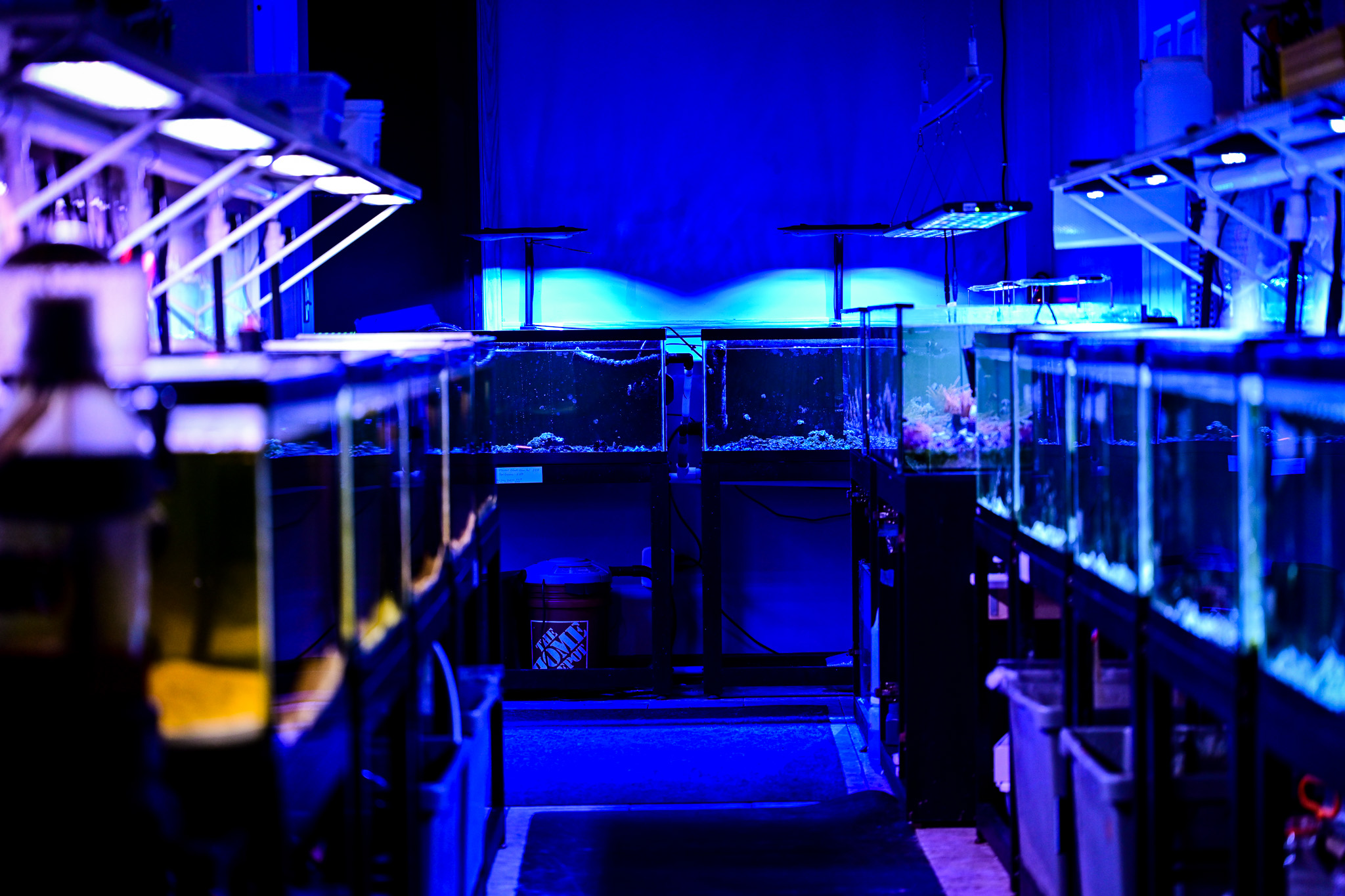
What made you decide to turn your new found passion into a business and how did you go about starting your farm?
When we realized that we probably couldn’t fit any more tanks in our house! I’m just kidding. It was really just a leap of faith for us. We had saved some money from a previous business and decided that we should invest in ourselves and our passion. We’ve always had an entrepreneurial spirit and you know the saying: “If you are doing what you love then you never have to work a day in your life.” We’ve found that to be true. Starting the farm was really just the easy part; that was just spending money. We began sourcing lights, equipment, and tanks. We started making good relationships with our suppliers. We even made a few good business connections overseas in order to import corals directly. Although that entire process was very foreign to us. It did take us some time to understand since we are in the land-locked state of Tennessee with no access to a Fish & Wildlife import airport. In fact, those airports really only exist in California, New York, and Florida. Over time, it became apparent that we were better off working with wholesalers state-side and farming our own corals through true aquaculture which is where our passion lies.
Has it been a difficult process? What issues have you faced along the way?
Well, the pandemic had some effects. And these issues have been a major hurdle for many businesses across a variety of industries. We definitely were not anticipating the energy cost to increase by 25% in 3 years or the rise in cost of transportation for shipping in and out. We’ve had to learn and adapt like many others. At the end of the day, we have found success by focusing on the animals. So, we stay focused on their health, nutrition, their well being, and improving our processes of growing, fragging, and culturing corals. We have found that when we put the focus on that, everything else sort of falls into place from a business perspective. I think we had to learn that through the early growing pains. In the beginning, we did not have the appropriate level of focus on livestock. So, we had to develop an appreciation for the process. And that appreciation has led to successes.
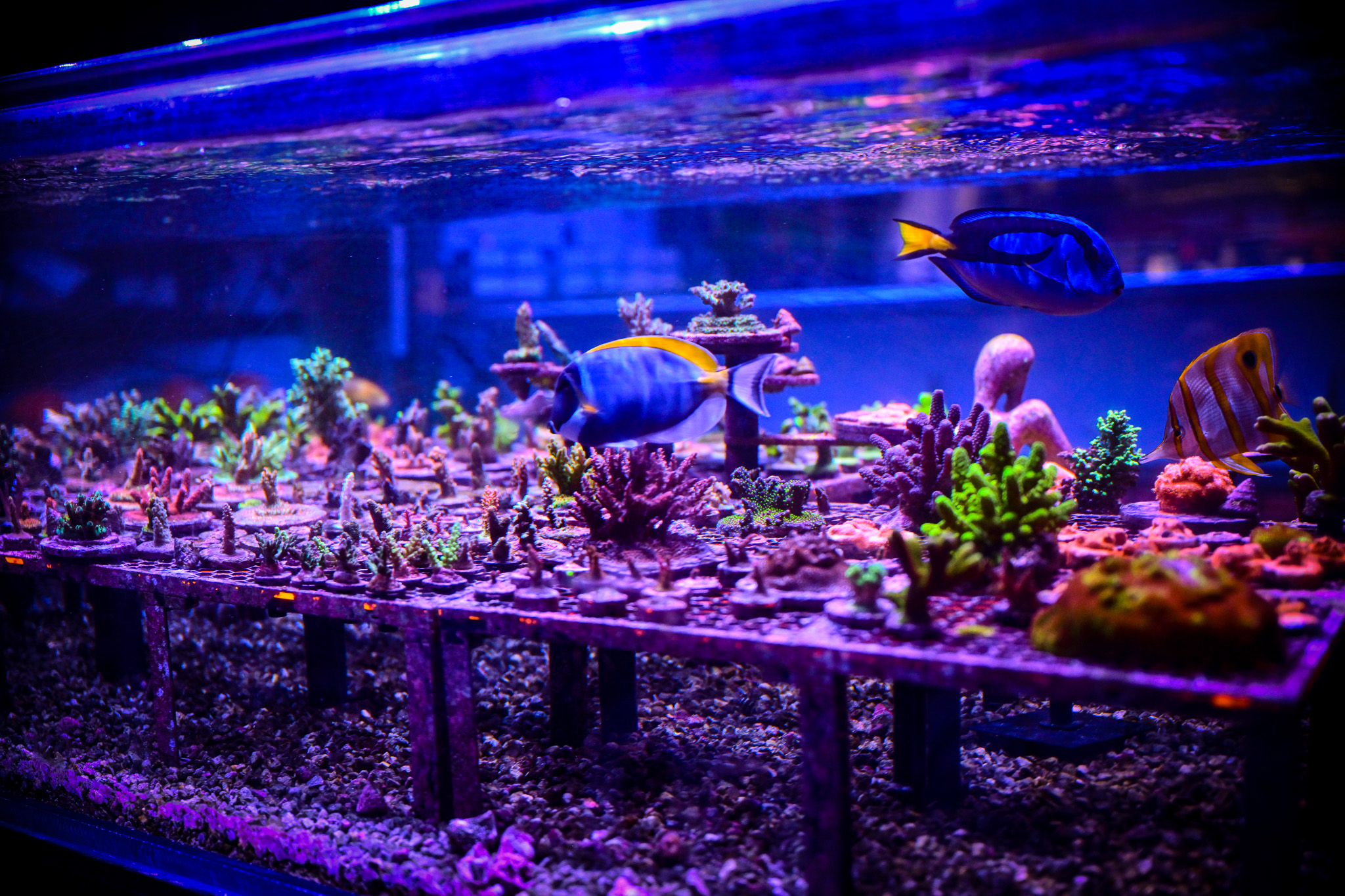
Speaking of culturing corals, what have you learned since you began and how has that guided your methodologies as you have grown your business?
So much! We have learned so much since we first began. And we are still learning new things every single day. Our first years were fraught with mistakes. Like I said, starting the farm was the easy part. Thinking we had any idea about what it actually takes to truly aquaculture corals was another story all together. We had to learn patience more than anything. We all know corals grow slow, but culturing corals is really about the long game. You don’t reap rewards for your efforts until later down the line. There is no way to rush the process. If you try to rush or take shortcuts, it is to the detriment of the animals, your customers, and ultimately yourself. The process is what the customers are paying for when they buy aquacultured corals from a coral farm. There are plenty of sources out there that will just get corals in and get them out, but there are less farms that are truly culturing corals over the long-term. I think once we had a clear understanding of that, we just had to build our processes and follow them day in and day out. From quarantining new arrivals to acclimating them to captivity and to the eventual aquaculturing of the corals.
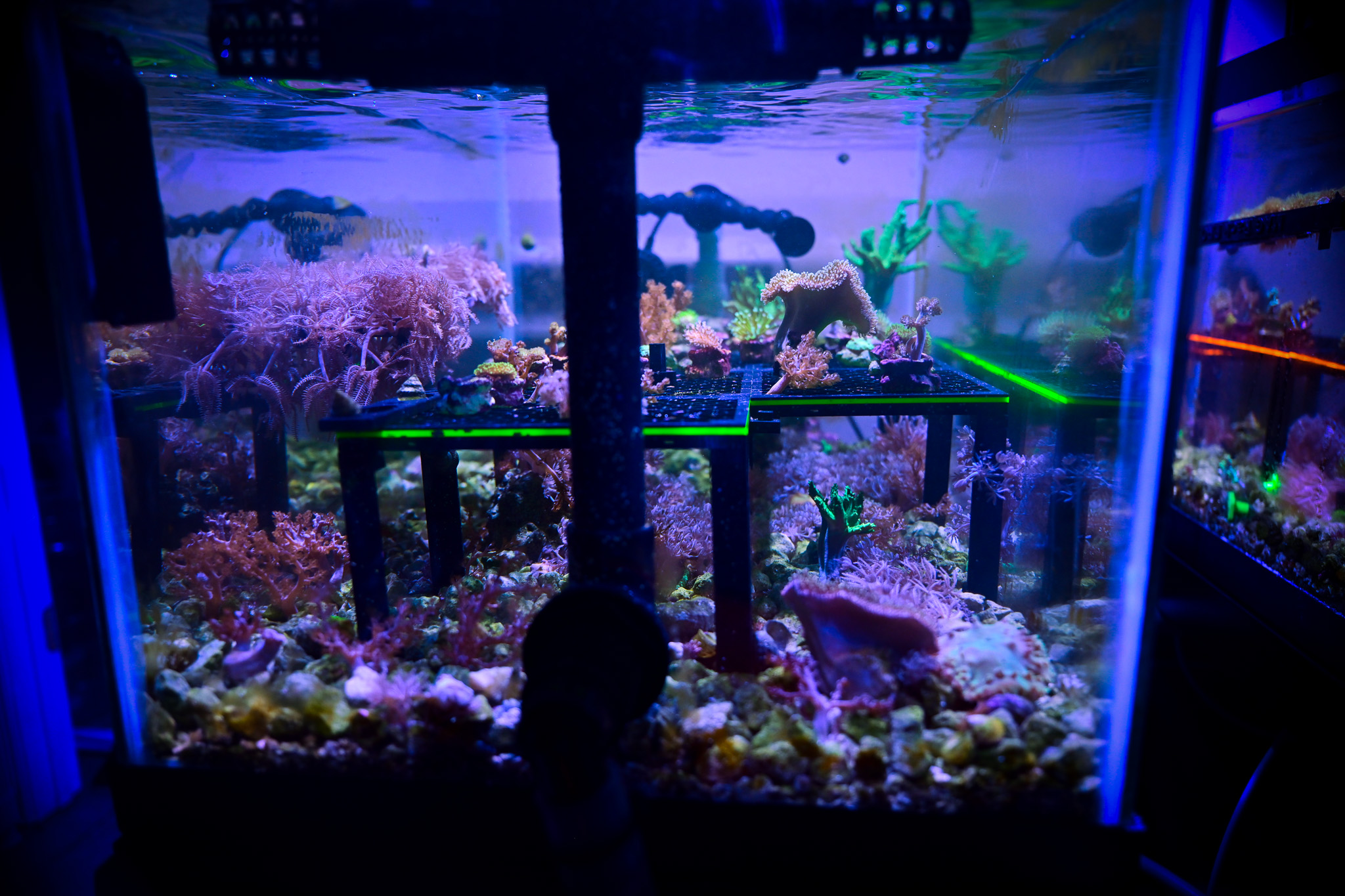
Speaking of Quarantine, what is your process when receiving new coral specimens at your facility?
When new corals arrive at our facility we run them through a Bayer insecticide dip. This process is fairly effective at killing things with a nervous system and not the corals themselves. This process will account for some level of pest control, but it doesn’t get the eggs. We have even found that it has difficulty getting certain pests which might be burrowed deep within porous reef rock and not exposed. This is really just the very first step of a long process. We rinse them thoroughly after the dip and a visual inspection occurs. At this point, we may use tools like tweezers, forceps, brushes, or scalpels to debride the coral and remove any barnacles, sponges, or other oddities before placing it into our new arrival system. We have seen all manner of things. Generally, our reaction can be summed up as, “What the heck is that?” Sometimes, we will isolate a coral if we still feel it isn’t entirely healthy. Sometimes, we will frag off things that don’t look healthy or re-base the coral onto a new plug if the old plug/rock has something growing that we’d rather not introduce to our systems. This is a critical part of any farm process. You will be chasing your own tail every week if you do not do this step. You will be constantly getting new things in and introducing new pests which will consume all of your time if you try to shortchange the process. We’ve had to learn that the hard way. Sometimes, we may spend many weeks recovering a coral and observing it before we are ready to begin our culturing process. Only the corals that acclimate the best to captivity become farmed corals in our facility. There is no point in farming a coral that you can’t cut or that doesn’t grow.
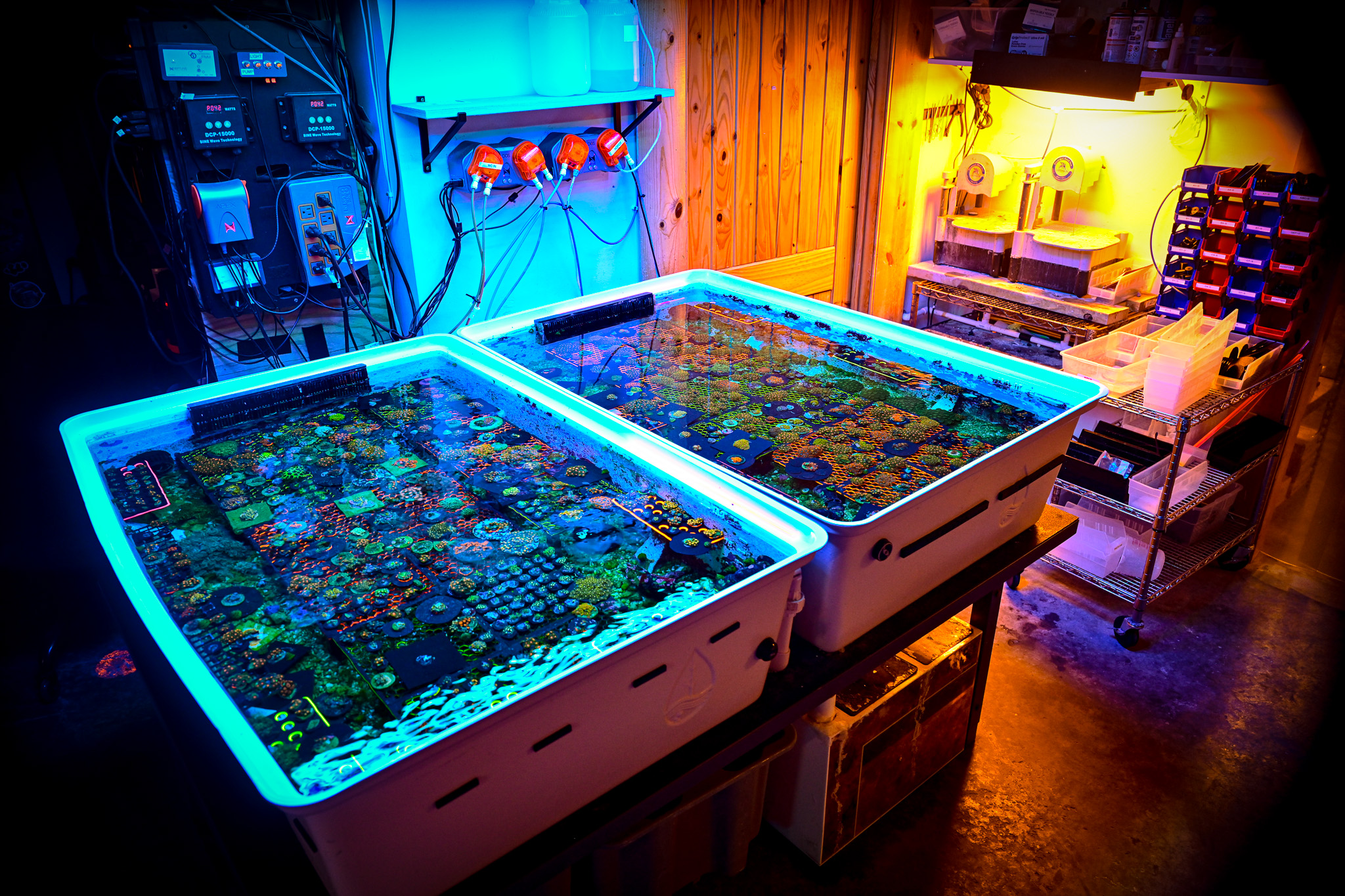
You mentioned earlier that Coral Aquaculture is about the long game — After you process and receive new specimens, how long do aquacultured corals take to grow?
Yes, it’s the “long game” for sure. The initial quarantine process is just the first step. The observation process truly depends on the specimen, but we generally want to see a coral be conditioned. By “conditioned,” we mean it is growing and adding mass in captivity before we are ready to start fragging it. This generally takes 16-24 weeks. There are exceptions to this. Sometimes, it seems like you can watch a coral for 16-24 weeks and it’s not doing a thing, it hasn’t grown, it is not encrusting but it still looks great. You may have heard the phrase, “fragging to promote growth.” We are true believers in this concept because we have seen it with our own eyes. When you take that specimen of coral and frag it, you will be surprised by the response you get from the frags. It seems as if the coral grows faster after it is cut, or in the case of a coral that hasn’t been growing at all, but is well conditioned, it will begin growing right after you cut it. However, this really isn’t when the coral is ‘farmed’. Those initial frags have to be further grown and potentially cut again. This generally takes another 16-24 weeks, but depending on specimen, it could potentially be longer or in rarer cases, faster.
For most aquacultured specimens, it takes a minimum of a year. For some of the slower growers, it can take 2 years or more. This is just how long it takes. There are no shortcuts to the process if the aim is long-term culture and sustainable availability.
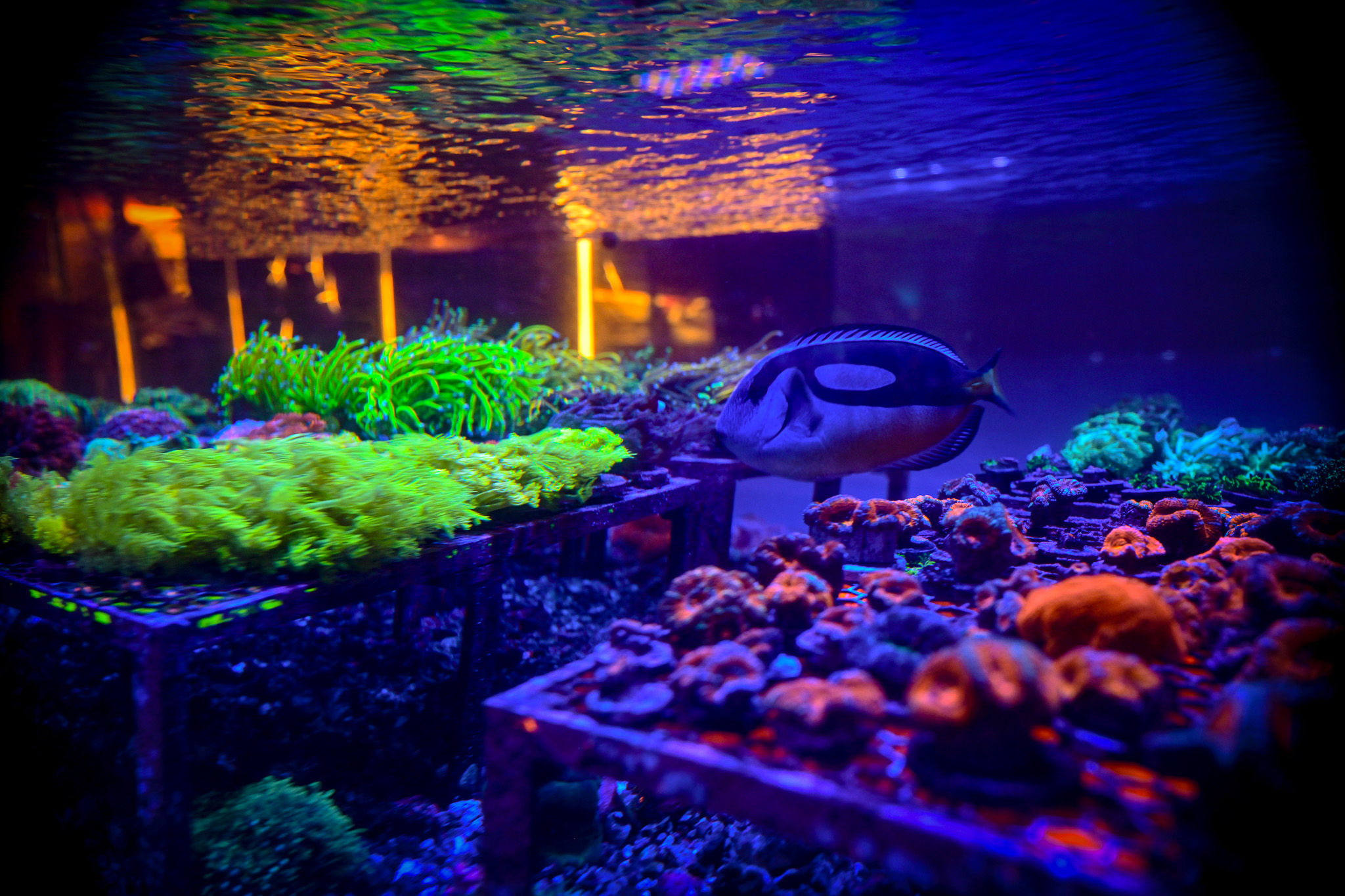
What benefit does a customer have when buying aquacultured corals from a farm like yours?
That’s a great question! All of the things I described above ensure that you are purchasing a coral that has stood the test of time in captivity. This coral has survived certain tank events that we all face. It has been cut for multiple generations in captivity, making it well adapted to tank life. It’s a “grower” and a “shower.” Otherwise, we wouldn’t be bothering to farm it. The growth rate, color, and rarity of the farmed corals generally determine the price you will pay for them. If we have a super-bonkers Acropora that we are aquaculturing and we price it at $40.00 a frag, every cultured frag will be sold out overnight and we will not have anymore. It could be a year before we can offer that coral again. On the flip side, we may have a fast growing coral like a Palythoa or Zoanthid that we can offer an amazing price on because we farmed that coral and we have a surplus of frags. That’s how aquaculture works. It’s a classic supply and demand scenario. We all know how easy certain corals can be to grow and farm such as Pulsing Xenia and Anthelia, for example, or certain strains of Zoanthids. There is a reason why these are great starter corals.
Customers can benefit from an individual farm’s ability to grow certain corals and you will often find great deals on certain specimens from our farm because at times we simply have a surplus. Not every coral we sell is an aquacultured coral, but we believe folks should buy aquacultured corals whenever they can!
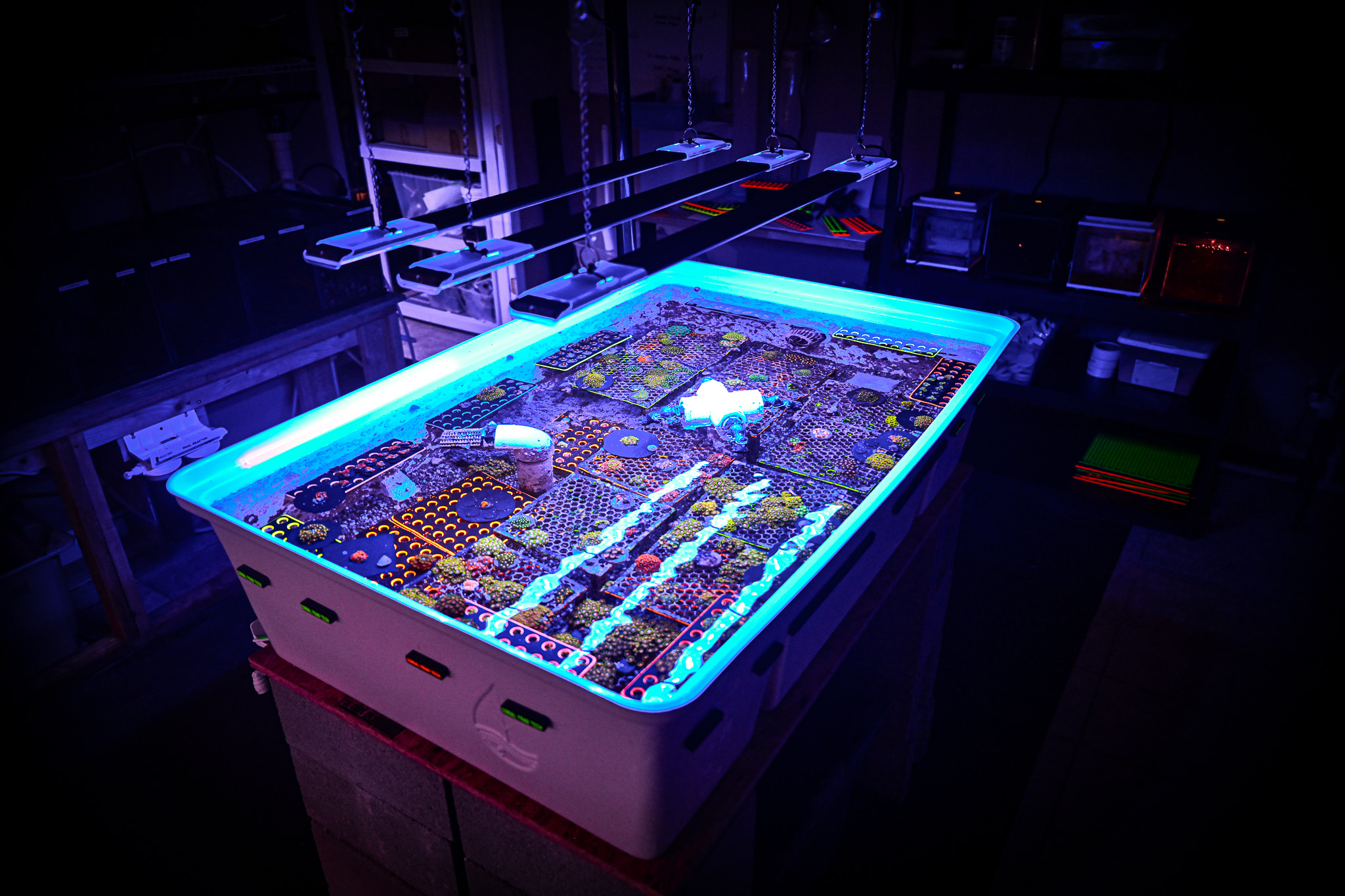
What is the process like for shipping and packaging the corals, and how do you ensure they remain healthy during transport?
Brandy is the Master order packer at Reef Chasers! I pretty much stay out of that process because she is a lot better at it then I am. I think attention to detail and taking great care in packing is super important to ensure a great experience for the customer and a comfortable experience for the animals. It was definitely something we had to learn as our business grew and as we began shipping both Fish and Corals. Brandy is very good at packaging and shipping livestock. She has developed training processes to ensure consistency every time. We use insulated shipping coolers and double bag all specimens in 4 mil plastic. In the case of using specimen cups, we also use an outer bag to prevent leakage. We float the corals using foam cutouts, suspending them upside down in the water to prevent contact with the bag or specimen cups. This is especially important for certain corals that damage easily during transport like Euphyllia and Acropora.
When it comes to fish, we don’t short change the bag, the water, the air, or the shipping container. We had to learn that it is extremely important to ensure enough oxygen is in the bag for the fish to make a long journey (in the event of a delay up to 2 days). Most of our packages can survive a 2 day trip, and we pack them all with the chance of a delay in mind. Depending on the temperature at the destination, we will use Heat or Cold packs as necessary inside the cooler box. All packages receive acclimation cards and DOA instructions. We offer a minimum 5 day guarantee to our customers for all livestock purchases, and up to 7 days for aquacultured corals and quarantined fish. We want all customers to have confidence in their purchases with us. We are confident in our ability to deliver healthy specimens to their home, which is why we have a long guarantee period.
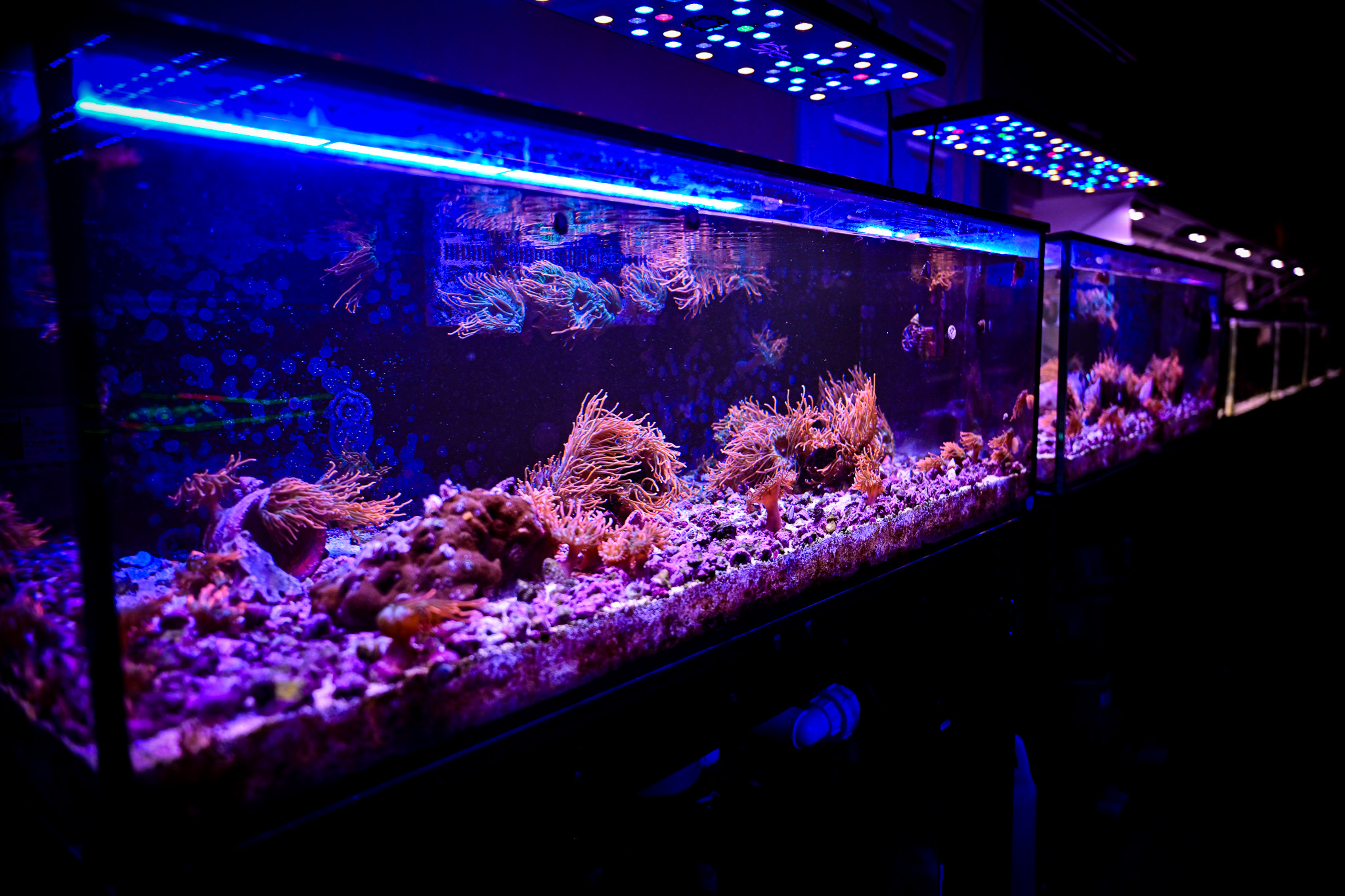
You see Coral and Fish every day, which one are your personal favorites?
For me it’s got to be Acropora — it’s weird because it’s not the species I loved at first. I don’t think I’m alone in that though. Acropora is the one you fall in love with once you start growing and keeping them. It helps that they are mostly fast growing and easy to frag.The crazy thing about coral is there are untold thousands of unique specimens and even new species being discovered all of the time. It is super difficult to just choose one. For fish this one is easy: Achilles Tang all the way!
Brandy loves every clownfish she sees, admiring their bravery. At our facility, she will accept any clownfish surrendered and keep them here as an “anemone caretaker.” When it comes to corals, her favorite changes from week to week. Currently, it’s a Raja Rampage chalice that we are just now beginning to culture.
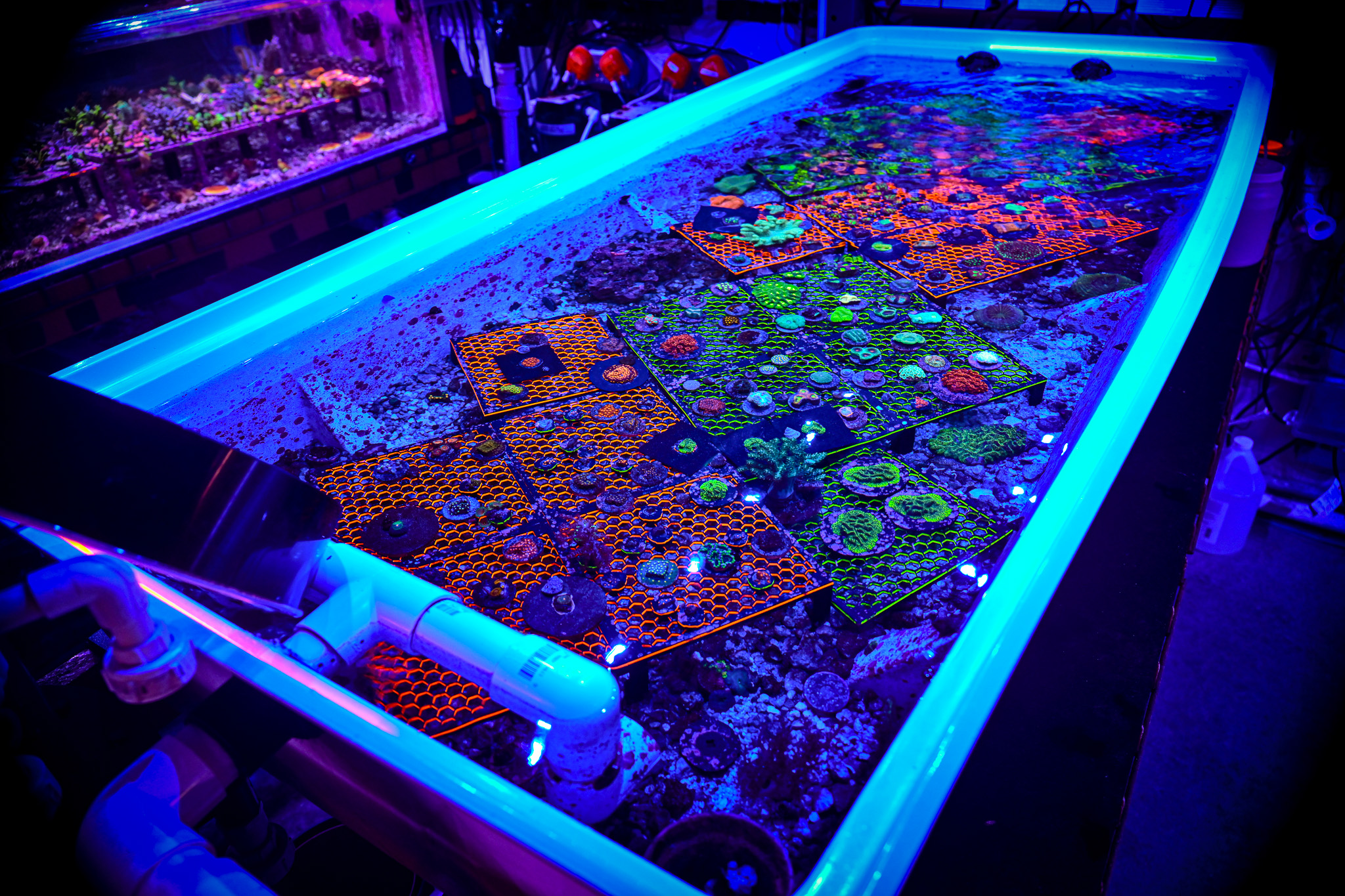
Does Reef Chasers have any big plans for 2025?
Absolutely, tanks, tanks, and more tanks! We never stop adding onto the farm and we have space to grow. We have and will continue to add farm systems to further dial in certain species of coral for aquaculture. We just recently attended Reef Stock Chattanooga, which was our first national tradeshow, and we can’t wait to hit the road and do more in 2025! We’re already booked for Reefstock Denver, and we’re looking forward to seeing everyone there!
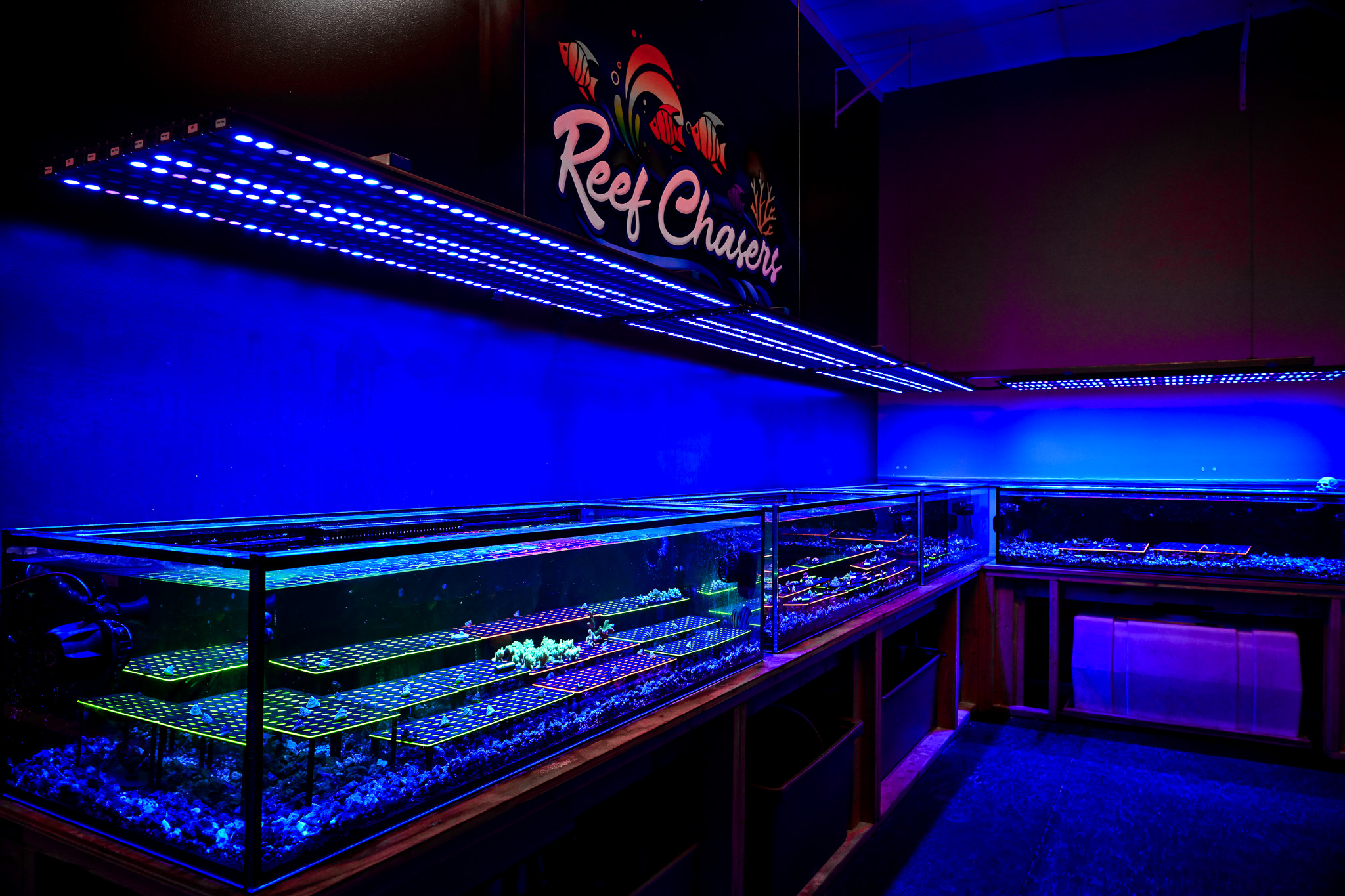
A big thanks to Steve for taking the time to answer my questions! We’re excited to see Reef Chasers at both Reefstock Denver and Chattanooga in 2025. Be sure to visit their website at www.reefchasers.com and check out the YouTube video Salem and I filmed during our visit in August. There’s much more to come from Reef Chasers, and we can’t wait to see what they’ve been working on!



